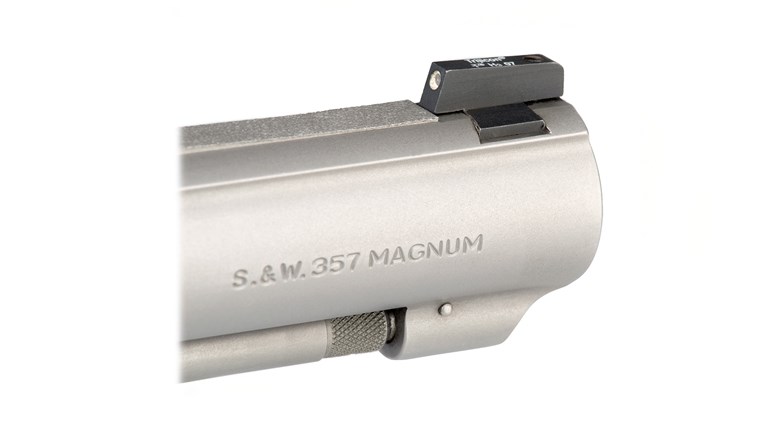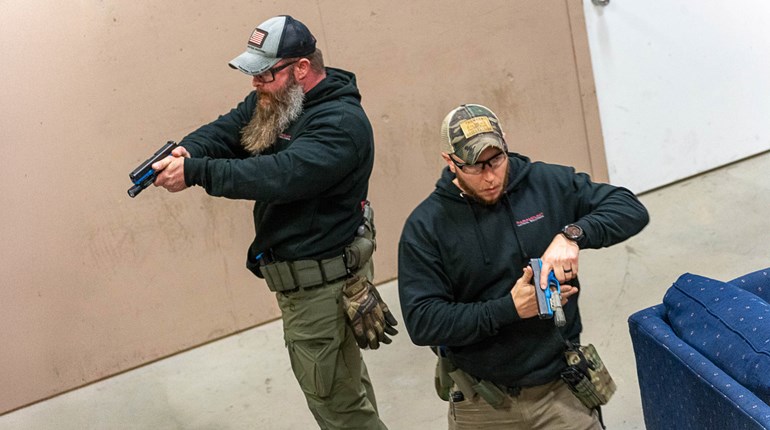
Much has been written about bullet stability and barrel twist rates, frequently in connection with the AR platform and the need for barrels with faster twist rates to properly stabilize heavier projectiles. I am wondering how this issue might relate to common handgun calibers. Is bullet stability also a concern with handguns having slow barrel twist rates when bullet weights vary? If so, why is it not mentioned more often?
Jim Hansz, via e-mail
Although typical handguns can be used effectively at greater distances, 50 yards is generally considered the maximum effective range of an everyday-carry pistol or revolver. For that reason alone, most manufacturers select a twist rate for a specific caliber that will stabilize commonly available commercial ammunition at that distance, and perhaps a bit farther.
Barrels with slower twist rates are often carry-overs from many years ago when they were popular with straight-wall, blackpowder cartridges shooting lead bullets. Accuracy was found to be acceptable with more-modern ammunition, so there was no real reason to change. Revolvers currently made by well-established manufacturers in the industry chambered in .45 Colt and .38 Spl. are examples of this.
Conversely, pistol cartridges such as the 9 mm that started with a tight twist rate in the neighborhood of 1:10, plus or minus depending on the manufacturer, have maintained that rate of twist with few exceptions for more than a century. Smith & Wesson took a page out of its .38 Spl./.357 Mag. revolver book and rifled its 9 mm pistols with a 1:18.75-inch twist rate, although the company does produce 1:10-inch twist barrels for its 9 mm pistols, as well.
Custom barrel makers such as Schuemann have experimented with 9 mm, .38 Super and similar-cartridge match-grade barrels—designed to shoot lightweight bullets at high velocities in competitive events—with twist rates as slow as 1:32-inch achieving excellent results. They won’t stabilize longer and heavier bullets, but that wasn’t the intent in the first place.
In taking a look at Precision Pistol Competition (PPC), where the .38 Spl. revolver still reigns with the 148-grain hollow-base wadcutters as the ammunition of choice, accuracy at 50 yards is an absolute necessity. In the early days of the sport, the 1:18.75-inch twist rate of Smith & Wesson revolvers gave way to the 1:14-inch twist of Colt revolvers at 50 yards. This was because the long, slow-moving wadcutters were sometimes showing signs of instability as they passed through the long-distance targets.
Some enterprising competitors installed Colt Python barrels on their Smith & Wesson revolvers to get the best accuracy at 50 yards, thus creating what was known as a Smython or Smolt. Custom barrel makers started making 1:14-inch bull barrels for PPC competition, which worked well in getting the long wadcutters to fly straight and cut clean holes in the long-line targets. Some gunsmiths opted for even tighter twist rates of 1:12-inch and 1:10-inch, which worked as well as the 1:14-inch barrels, but the advantage was usually in the shooter, not the barrel.
Other than accuracy factors, twist rates have varied because of bullet construction and pressure issues related to high-pressure handgun cartridges, such as the development of the .357 SIG cartridge. Original test barrels were little more than rechambered 9 mm barrels with 1:9.84-inch (250 mm) twist rates. Projectiles of 115 grains and lighter tended to impact the target in pieces, if at all, through these barrels—and the pressure signs were unacceptable, as well—while attempting to achieve ballistics comparable to that of the 4-inch .357 Mag. revolver. After experimenting with different twist rates to solve the projectile-disintegration and pressure concerns, a 1:16-inch twist rate solved the problem.
As with rifles, handguns have had their own twist-rate issues, but under a different set of circumstances. Most (if not all) of the problems related to twist rates in pistols (as well as revolvers) were solved decades ago. It won’t be until some new technology or ammo arrives on the scene that twist rates in hand-guns will need another look.
For the time being however, rest assured a currently produced handgun will chamber and fire satisfactorily almost any factory ammunition presently available for it. Most readers find “no news is good news” rather lackluster to say the least. Nonetheless, that’s just one reason why more has not been written concerning the subject of twist rates as it relates to the accuracy of handguns.




































